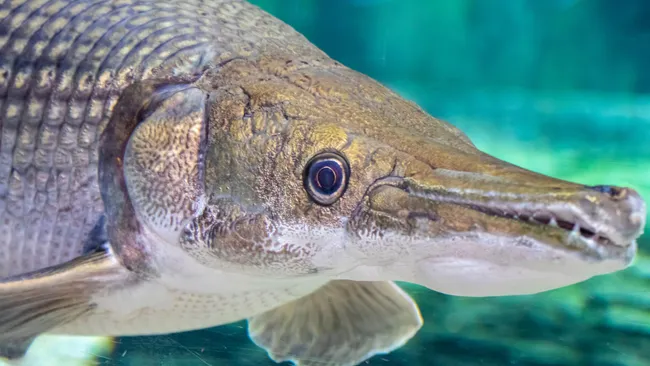This “living fossil” can grow as large as an alligator, has two rows of needle-sharp teeth, and such strong armor that it survived predatory dinosaurs.
Name: Alligator Gar (Atractosteus spatula)
Habitat
The alligator gar inhabits rivers, reservoirs, and coastal bays, primarily in southwestern U.S. states and extending down to Veracruz, Mexico.
Diet
These giant fish are opportunistic feeders, consuming crabs, fish, birds, mammals, turtles, and even carrion.
Why It’s Remarkable
With a long, snout-like jaw, thick armored scales, and two rows of sharp teeth, the alligator gar bears a striking resemblance to its namesake — the alligator. Its ancient lineage dates back 100 million years to the Cretaceous period when dinosaurs roamed the Earth. Their longevity is attributed to a unique defense system: scales made of a hard enamel known as ganoine, which has helped them survive even against predatory dinosaurs. Once they reach over a meter in length, their only remaining predator is the alligator.
Fast Growth and Long Lifespan
Alligator gars grow rapidly, starting from tiny toxic eggs to reaching lengths of up to 2 feet (0.6 m) within their first year. They continue to grow throughout their lives and can live for up to 100 years.
Living Fossils
Alligator gars are considered “living fossils,” having barely changed for millions of years. A 2024 study revealed that they have the slowest rate of evolution among jawed vertebrates. Despite being separated by 100 million years of evolution, alligator gars and longnose gars (Lepisosteus osseus) can still interbreed and produce fertile offspring. This slow evolution stands in stark contrast to other species, which typically evolve into more distinct forms over such long periods of time.
Conservation
Despite their fearsome appearance, alligator gars are ambush predators that prefer eating crabs, fish, and birds. In the 1930s, efforts were made to reduce their population, including an attempt to electrocute the fish using 200 volts of electricity. Today, they are protected in Florida, and fishing regulations are enforced in Texas to ensure their conservation.
